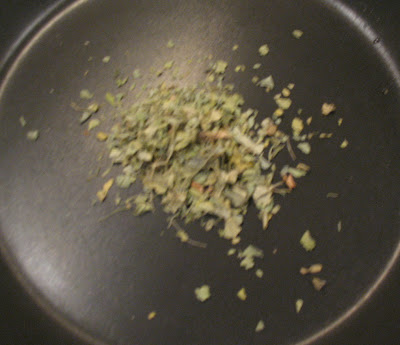-----------
Monday, January 31, 2011
Paneer Peas Butter Masala
-----------
Aval Upma / Poha Upma | Upma Recipes
Aval aka Poha is a rice flattened to light dry flakes. Aval upma is a very light, low calorie snack perfect for breakfast/dinner. The most common and known variety is Kanda poha though many varieties are still popular, like lemon flavored or tamarind flavored poha. Today's recipe is a simple aval upma flavored with roasted chana dhal and one of my MIL's specialty dishes. Trust me, this is very
Warm Up Your Home with Radiant Heating
 Radiant heating is an emerging trend in new home construction and existing home remodeling. Radiant heating systems involve supplying heat directly to the floor or to panels in the wall or ceiling of a house. Radiant systems depend largely on radiant heat transfer: the delivery of heat directly from the hot surface to the people and objects in the room via the radiation of heat (similar to the effect you feel when you can feel the warmth of a hot stove top from across the room).
Radiant heating is an emerging trend in new home construction and existing home remodeling. Radiant heating systems involve supplying heat directly to the floor or to panels in the wall or ceiling of a house. Radiant systems depend largely on radiant heat transfer: the delivery of heat directly from the hot surface to the people and objects in the room via the radiation of heat (similar to the effect you feel when you can feel the warmth of a hot stove top from across the room).Here's how radiant heating stacks up against other common heating systems:
The Advantages of Radiant Heating
Radiant heating has a number of advantages over other home heating technologies. It is generally more efficient than baseboard heating and usually more efficient than forced-air heating because no energy is lost through your home's ducts.
- Comfort: Radiant heating sends heat through coils hidden beneath the floors of your home. There’s no dust, no noise, no hot air blasting through unsightly vents in the floor or ceiling. Heat is evenly distributed throughout the house, virtually eliminating hot and cold spots.
- Safety: Nails, water, direct contact with the heating element—nothing interferes with the safe operation of a radiant heating system. Each unit is tested to industry standards and uses worry-free low voltage energy.
- Reliability: Radiant heating is practically maintenance-free and most elements are backed by a solid manufacturer’s warranty. There aren’t any moving parts to malfunction and most have self-diagnosing technology so small problems can be identified before they become big trouble. You won’t have to worry about yearly maintenance or service checks, either.
- Convenience: With fully adjustable and programmable thermostats, radiant heating systems let you set a temperature schedule that compliments your lifestyle. Just set it and relax!
- Efficiency: One of the most energy-efficient types of home heating currently available, radiant heating requires significantly less operating time than conventional heat systems to reach desired temperatures. You’ll spend less on heating and can help reduce your greenhouse gas emissions.
- Custom Design: Each radiant flooring system can be customized for your unique needs. Whether you want single-room floor warming in your tiled bathroom or whole-house heating under hardwood floors, you’ll find a radiant heating system to suit you. They can be installed under any surface and don’t require a furnace, boiler, vents, or ducts.
Radiant Heating vs. Hydronics
Hydronic heating uses hot water to warm floors, which then heat the surrounding room. Though they are similar to radiant heating systems, there are some differences.
Both hydronic and radiant heating use low voltage and are energy-efficient. However, hydronic systems present several considerations that don’t apply to radiant heating:
- Need gypsum or concrete slabs, costing $4.00 or more per square foot to install
- Need a boiler room or basement to house hot water controls
- Use only 65-85% of system’s energy, as heating strength fades the further hot water moves from the boiler unit
Radiant Heating vs. Forced Air
Forced air systems blow warm air freely around the room, allowing heat to rise up to the ceiling. This leaves floors and living spaces cold and releases dust and other particles into the air. In order to maintain a comfortable temperature forced air heat has to be set higher; this increases workload on the system and costs you more on your energy bills. Also, because radiant heat actually radiates through the room rather than being blown, rooms often feel warmer and heat feels more evenly distributed and consistent.
Related Heating Information from Horizon Services...













